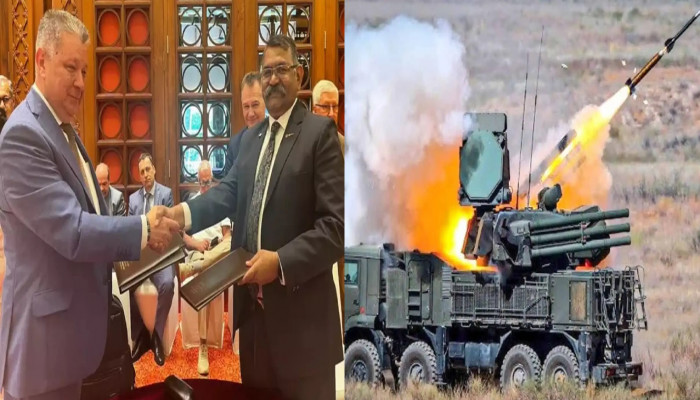BDL and Russia’s Rosoboronexport partner to boost India’s air defence with Pantsir system
- In Reports
- 03:24 PM, Nov 12, 2024
- Myind Staff
India’s Bharat Dynamics Limited (BDL) has signed an MoU with Russian defence export agency Rosoboronexport (ROE) to explore cooperation on the Pantsir air defence missile-gun system, a move that highlights growing efforts to strengthen India’s air defence capabilities. Announcing the agreement on social media, BDL explained that this MoU will cover joint work on Pantsir system variants, bringing new air defence solutions to India.
The formal signing took place in Goa during the 5th India-Russia Inter-Governmental Commission meeting, where BDL Chairman and Managing Director Commodore A. Madhavarao (Retd) and Rosoboronexport’s Naval Department Deputy Director Kovalenko German signed on behalf of their organisations.
The Pantsir-S1, which combines both missile and gun defences, is known for its agility and rapid response capabilities. Rosoboronexport describes the Pantsir-S1 as ideal for protecting key sites against drones, aircraft, missiles and high-precision weapons. The system can tackle up to four targets simultaneously, including fast-moving objects reaching speeds of up to 1,000 meters per second. The missile component can strike targets between 1,200 to 20,000 meters, while the gun component covers a range of 200 to 4,000 meters.
This deal also signals India’s ongoing military partnership with Russia, despite recent challenges caused by the Russia-Ukraine conflict. Earlier, India procured three regiments of the S-400 Triumf air defence systems from Russia, with two more on order, though deliveries have faced delays due to the geopolitical situation.
The MoU with Rosoboronexport represents BDL’s first formal agreement with the Russian agency on air defence technology, marking an important development for India’s defence sector. Through partnerships like this, India is looking to reinforce its defence systems to address modern threats, reflecting a continued focus on national security in an increasingly complex global landscape.







Comments